Try Book 1 for Free
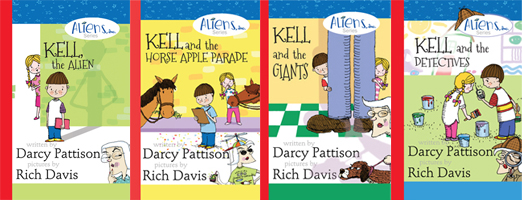
Assumption. I am assuming here that you’ve written a fantastic children’s picture book and the illustrations you’ve done or hired done are amazing. You’ve also assembled an amazing book using InDesign (recommended) or other software. This checklist takes up the process at the point where you have the files ready to upload. The checklist is useful whether you are producing a print book or an ebook, although some items may not apply in one or the other cases.
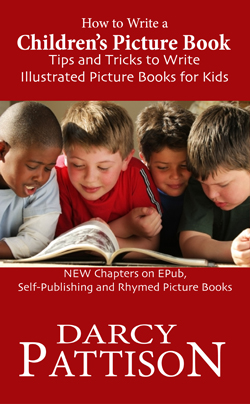
Double-Check the Book’s Production
Front Cover
Double-check spelling of everything.
Color reproduction of the art.
Back cover
Double-check spelling of everything.
Blurbs, quote or promo copy – do you have all the marketing material on the back cover that is needed? Any recent review quotes to add?
Copyright page
(Assumption: you want to sell this book to school libraries. If you only want to sell it as an ebook, then you only need to check the copyright date, since you probably won’t use an ISBN.)
Copyright date correct?
ISBN correct (if used)?
CIP correct? Are you using Publisher’s Cataloging-in-Publication data, which helps librarians catalog your book?
Interior
Check spelling, grammar and punctuation on every page.
Check position and reproduction of art on every page.
(Why are there 32 pages listed?)
- p. 1____Text _____Art
- p. 2-3____Text _____Art
- p. 4-5____Text _____Art
- p. 6-7____Text _____Art
- p. 8-9____Text _____Art
- p. 10-11____Text _____Art
- p. 12-13____Text _____Art
- p. 14-15____Text _____Art
- p. 16-17____Text _____Art
- p. 18-19____Text _____Art
- p. 20-21____Text _____Art
- p. 22-23____Text _____Art
- p. 24-25____Text _____Art
- p. 26-27____Text _____Art
- p. 28-29____Text _____Art
- p. 30-31____Text _____Art
- p. 32____Text _____Art
Marketing and Metadata Materials
Before you upload files, you’ll need your marketing material ready. I usually create a one-page Sell Sheet that includes the following information.
Exact Title:
Subtitle:
Series Name and Volume of this book:
ISBN, ASIN, and price for each format:
Description
The description is the time to hook your reader. The first 50 characters should give enough information to interest a reader in your book. Limited html is allowed on many platforms, so I often prepare two versions, one plain text and one marked up for html. For Kindle, you have 4000 characters–which is a lot. Use a word processor that counts the number of characters and use all of this valuable real estate.
Categories
Depending on the platform used, you may be asked to provide two or three categories. You can refer to the BISAC categories as a guidelines, but each platform may have its own quirks for this.
1.
2.
3.
Keywords
To help the book buyer find your book, most platforms allow you to insert from 5-7 keywords. You should have these ready; see Amazon’s advice on keywords.
1.
2.
3.
4.
5.
6.
7.
Age Levels
Often a platform will allow you to specify the age range for the book’s audience. Don’t try to cover every age (ages 1-15). Instead, choose a 3-4 year range. Typical ranges are ages 4-8, ages 5-8, ages 6-8, ages 8-12, ages 9-12, ages 12-15, and so on.
File Size
If you plan to publish the ebook on Kindle, you should know the file size. Full color children’s picture books are often 4-8 MGs of data. Because Kindle charges a delivery fee of $0.15 in the US, you’ll want to know this to decide on pricing.
Price for Different Formats
If you upload to multiple platforms, you’ll likely want to be sure to keep the data the same across them. It helps to write out your prices; be sure to update this data whenever you change it on one platform.
Cover Files
While I’m preparing marketing materials, I also like to create multiple versions of my cover files. I label them with the size and the resolution, so it’s easy to find later. Here are typical sizes I create for a square picture book cover, 8.5″ x 8.5″ It’s simple to create multiple files when the Photoshop program is already open, and saves me time later. Usually, I create jpeg files, but sometimes, I’ll repeat for .png files.
- Cover-2500×2500-300.jpg (This means the cover is 2500 px by 2500 px at 300 dpi.)
- Cover-2500×2500-150.jpg (This means the cover is 2500 px by 2500 px at 150 dpi. Some like to also prepare files at 96 dpi or 72 dpi for use on the web.)
- Cover-1000×1000-300.jpg
- Cover-1000×1000-150.jpg
- Cover-500×500-300.jpg
- Cover-500×500-150.jpg
- Cover-250×250-300.jpg
- Cover-250×250-150.jpg
With the Sell Sheet complete, and the books cover and interior files ready to go, it’s time to upload. Good luck with your book!

More jacket art for Escape from Netherworld—it’s about a group of role-playing gamers who are somehow transformed into their characters and transported into an alternate realm: Netherworld. Yesterday I showed you Twiggy the dwarf. Here’s Borhai the warrior who starts out as a regular gaming guy named Dave.
My pal, the extraordinarily talented Gina Datres, is the book’s designer and she called me in to illustrate the jacket. After some discussion and rough sketches back & forth we hit on the idea of 3 individual images of the gamers going through their transformation. For the 2 guys, I drew the gamers in pencil but fully rendered their characters in paint. I work with watercolor (gouache), so I traced some of the drawing with a wax candle. Since watercolor won’t stick to wax, you can see the drawing of the gamer ‘through’ the painting of the character. Piper, the elf-girl, doesn’t change in size enough to make that idea work so I made her hair a magical element that swirls around her as it grows.
If you’d like to buy a copy of Escape from Netherworld just click here.
Author: David Kuklis
Designer: Gina Datres
Illustrator: John Manders
Editor: Nan Newell
Published and Printed by:
Word Association Publishers
Tarentum, PA 15084
ISBN: 978 1 59571 994 2
Available for purchase:
wordassociation.com — 1 800 827 7903
barnesandnoble.com
amazon.com
As usual, here are the rough sketch, tight sketch, color study and final painting.
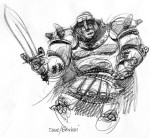
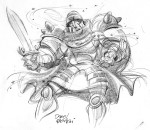

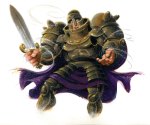


Now available!

Now available! NOW ON THE APPLE IBOOKSTORE! Kindle Paperback The Society of Children’s Bookwriters and Illustrators has recently announced the formation of a new award, the Spark Award, which is designed to recognize excellence in books published in a “non-traditional publishing route.” As the 2013 winner of the Writer’s Digest Self-Published award for children’s picture […]

Alternate publishing has been a quiet, behind-the-scenes subject for the last two or three years, but I keep hearing people talking about how they’ve taken the plunge. The terms vary: self-publishing, indie publishing, niche publishing. Some authors are apologetic; some are arrogant; some are business-like. But more and more, people are taking their copyright into their own hands and asking: how can I make money with what I have written. This week, we’ll look at seven stories of people who have done exactly that. For every story told here, I probably know of two or three more similar stories.
Dusting off an old publisher’s hat
Guest post by Joni Sensel
My latest book starts with a mouse-gnawed, bedraggled hat, and I found myself donning an old hat myself to get this book to readers who were asking for it.
More than ten years ago, I started a small press and self-published two picture books. One earned an award, both sold out their print runs, and I got a terrific crash-course in publishing — enough to know I’d rather write. I stuffed my publishing hat into a closet.
After four traditionally published middle-grade novels, however, I dusted off my DIY cap. Having published THE FARWALKER’S QUEST and its sequel (which were contracted individually), Bloomsbury didn’t even want to consider the trilogy’s finale. Though the books earned good reviews and even a little award notice, sufficient copies didn’t sell for the company to invest in the third.
Farwalker’s Quest was a 2009 Cybil Award finalist and a 2010 Bank Street College ‘Best Book’.
REVIEWS
- This is a solid and well-paced fantasy in which the journey is more important than the conclusion. The theme of finding and accepting one’s true calling resonates. –School Library Journal
- [T]he book is at once elegant and lyrical, while also offering an intensely paced and action-driven plot for readers who are seeking adventure along with poetic contemplation.
–The Bulletin of the Center for Children’s Books
- This stand-alone fantasy has a unique setting with an intriguing history and a suspenseful plot. –Booklist
- The story offers crisp dialogue, an exciting plot, and strong secondary characters. –Kirkus
Yet readers were asking for more. So I finished it myself.
I did
Part 1: Steps 1 and 2With today’s oversaturated and tight publishing market, it’s difficult to find even a small publisher for the manuscript you’ve slaved over. Many authors have taken the matter into their own hands and are going the self-publishing route.
But, remember, have vision! This can be a worthwhile venture…if you first know a couple of things:
1. Self-publishing and co-publishing will cost you money This is an absolute when venturing into the self-publishing world. How much money will depend on the company you choose and which of the various services they offer that you buy into. And, there will be many aside from printing your book: editing, cover design, copyright, distribution, press releases, promotion, and so on. Each of these additional services will cost you more money, although most of these companies do offer package deals. I know writers who have spent under a thousand dollars and others who have spent over five thousand dollars to publish their book.
In addition to this, selling books is a TOUGH business. Just because your book is in print or digitally available, it does not mean you will recoup your money, or make a profit.
It may sound a bit harsh, but I’ve seen writers spend money on self-publishing hoping it will bring a return on their investment - this is not always the case.
2. Join a critique group before actually publishingYou’ve decided you want your book published no matter what. Well, that’ fine, but before you start think about which company to use to self-publish, JOIN A CRITIQUE GROUP; it is essential. I do reviews, editing, and critiques, so I read a number of self-published books and manuscripts, and what is evident, is many authors are unaware that they need to have an edited, polished manuscript before they think of going the self-publishing path.
When choosing a critique group, be sure there are new and experienced (preferably published) writers as members, and it needs to focus on the genre you write in. In a critique group, you’ll quickly begin to see, through critiques of your work and that of the other members, how writing should be done. You’ll begin to spot grammatical and punctuation and storyline errors – you will begin to hone your craft. The group will help you polish your manuscript – you’ll be amazed at the difference.
At this point, it is advisable to have it edited as a final insurance. Often, the company you go with to self-publish will offer editing services. Just price it compared to hiring your own editor.
Part 2 will be here Wednesday, February 10th, with steps 3 through 6 of Before You PublishFollow a great February Writer Tour with great writing and marketing information and reviews:
And you might also find this article of interest: Writing Books - is There Money in it?Until next time,Karen Cioffihttp://karencioffi.com/media/pagehttp://dkvwriting4u.com
Wow. I was all prepared to to write a post on the love/hate relationship of trying to get your book published, but Judy Dunn of Cats Eye Marketing tweeted this post by Harry Baum and it pretty much sums up everything I’ve been thinking about lately.
A Publishing Person Self-Publishes
I mean seriously, wow. If you’re like me and you wonder about the question of self-publishing or struggle over whether or not to submit your work to publishers, you need to read this article.
I’m going to get all woo-woo on you and say that another article opened my mind and allowed me to focus my energy on more positive, profitable pursuits than traditional publishing. It’s by my friend Mark Silver of Heart of Business:
What you need to do before you publish a book
If that weren’t enough, Jon of CBI Clubhouse pointed out a in a comment here that the first step is perfecting your craft. Worry about publishing later (paraphrased). He’s absolutely right and there’s tons of similar advice and information on his web site.
I’m surrounded by so much excellent information. If you ever wonder how I came to know a thing or two about anything, it’s because I’ve had help.

By:
David Billings,
on 4/10/2009
Blog:
Sparky Firepants Art Blog
(
Login to Add to MyJacketFlap)
JacketFlap tags:
publishing,
how-to,
children's book,
literary agent,
self-publish,
kids book,
agent,
scbwi,
publisher,
tips,
illustration,
book,
Add a tag
I hear this question a lot.
It’s a tough one because I know so many people have awesome ideas for kids’ books but just don’t know how to make it happen or where to even start. I know how it is; you see books on the shelf at The Biggety-Big Bookseller Corporations and think, “My ideas are better!”
It’s surely possible that you have a world-beating idea. Who am I to say? There are likely thousands of stories out there that will never be seen in print. I have several. The publishing industry is a complex beast. There are so many people and decisions that go into deciding what gets published that it’s extremely difficult to figure out the formula.
I hear ya. I’m a formula guy. I’m also a dude. I do better with straightforward, logic-based problems, not ethereal, emotion-based problems. Anyway, I’ll try and break it down for you in a way that’s helped me understand at least a little about how it all works.
In the current world of publishing you have basically three options after writing the story:
- Find an agent
- Find a publisher
- Self-publish
What do you want out of this?
You really have to think about what’s most important to you. If the most important thing is getting your story out there for your family and friends to share, then you should consider self-publishing. Don’t listen to the “Yeah, but it’s only self-published.” downer people. Do it. Be happy.
If you seek fame and notoriety and the cool factor of seeing your book on the shelf at The Biggety-Big Bookseller Corporations, then you would want to seek out a publisher or an agent. These people have the industry clout and know-how to get books on the shelves.
I’ve decided. Now what?
Self Publishing
Self-publishing can be expensive, but it doesn’t have to be. Using a service like http://lulu.com is an excellent way to go. I did that with my first book. Print-on-demand is also a very low investment on the publishing end. If you want to sell lots of copies of your self-published book, you have to be prepared for the sales and marketing end. That’s a whole other post. However, it’s possible to get your self-published work into libraries. Check out these resources:
PMA, the Independent Book Publishers Association
American Library Association
Publishers and Agents
Most publishers just want to see a MS (manuscript). They usually have submission guidelines that, if they aren’t followed, turns your submission into confetti. They also like to select their own illustrator, so getting illustrations done beforehand might be a waste of your money and time.
When you go through an agent, it’s the same. They’ll probably want to read the MS first (no pictures). Unless you have VERY strong professional-quality artwork, don’t send them pictures right off the bat. Some agents may want to work with you to create a dummy (mockup of the book) with pictures. Usually they already have an artist they want to do it. So again, you could be right back to wasting money and time if you hire someone before submitting it.
If it’s a picture book without words, then of course you can’t submit a MS first. You might need a query letter, though.
These aren’t hard and fast rules and different publishers and agents have different policies and methods. If you contact some and ask, they’ll gladly tell you what they’re looking for. It cuts down on their workload (and yours, of course).
The Word on Illustrators
If you want to self-publish, then of course you’ll need to find an illustrator! Go for it. Remember that you get what you pay for.
An experienced, professional illustrator should cost you a lot of money. We’re talking several thousands, depending on the size of your book. Don’t expect to get Biggety-Big Bookseller Corporation-type of artwork if you’re not willing to pay for it. You can find tons of artists who are itching to work for free or at low cost. If you don’t have much money, I sympathize. But understand a few things:
- If you ask a professional illustrator to work for peanuts, don’t expect them to be excited. They’re thinking, “How will I pay my internet bill with this?”
- If you find a student or non-professional to do it for a lick and a promise, don’t expect to be dazzled. It might happen, just don’t expect it.
- A promise of “Big royalties! More books later!” or “This will will sell a lot of copies!” means nothing. You’re asking someone to have blind faith in your book and marketing abilities. It might work out, but don’t forget that.
- So you love an illustrator’s work. It’s gorgeous, just what you want. They draw the most amazing animals ever. Don’t ask for proof that they can draw a marmoset. It’s annoying. Yes, she can draw a marmoset. Yes, even your very special marmoset.
- Are you an art director? Ever designed anything professionally? If not, consider hiring an outside art director to help you make sense of the process. You’ll be happier with the results.
You might find a pretty good illustrator willing to work for nothing simply because they believe in your book project and will accept proceeds from sales, but you still need a strong contract before starting. It protects you both. It’s also important to respect the idea that any artist is investing their time and effort in something that may not pay, so even if they are “up and coming” they still deserve to be viewed as contributing something of great value. Everyone starts somewhere.
Scared?
So I hope I scared you away from children’s book publishing.
If you’re not scared off, then I guess you really want to do this thing, huh? That’s good, because you’re going to need to believe in it even when people tell you it’s a pipe dream. You have to love your story so much that you’ll get it out there no matter what anyone else says.
In case you get the idea from this post that I somehow find all of this easy… well, I don’t. The publishing world is sometimes a big mystery to me, too. No one has the definitive answer on how to get a book published. We’re shooting at a moving target. Welcome to archery practice.
I’m currently developing a picture book. It’s a damn good idea, too (of course it is). I’m going to go through all of these thought processes I just outlined (except the illustrator part because, well… I know someone). I’m not a book publishing psychic, so I’ll make it as good as I can and then let it go.
A great resource is SCWBI. For members, there’s a great community support, workshops, and conventions geared toward the children’s publishing industry. Check it out.











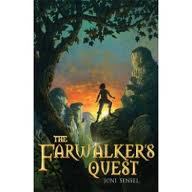
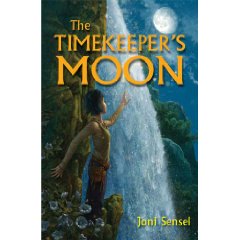
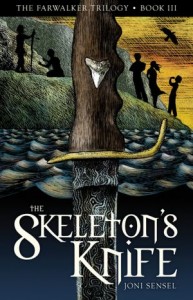

I'll be following your series. One cannever know enough about this business. The more cost saving tips, the better.
Stephen Tremp
Hi, Stephen,
I know what you mean. I've been working with a couple of writers who weren't aware of the possible obstacles and costs involved with SP. Just want to shed some light.
Thanks,
Karen Cioffi
Thanks for the tips and great article links--off to check them out!